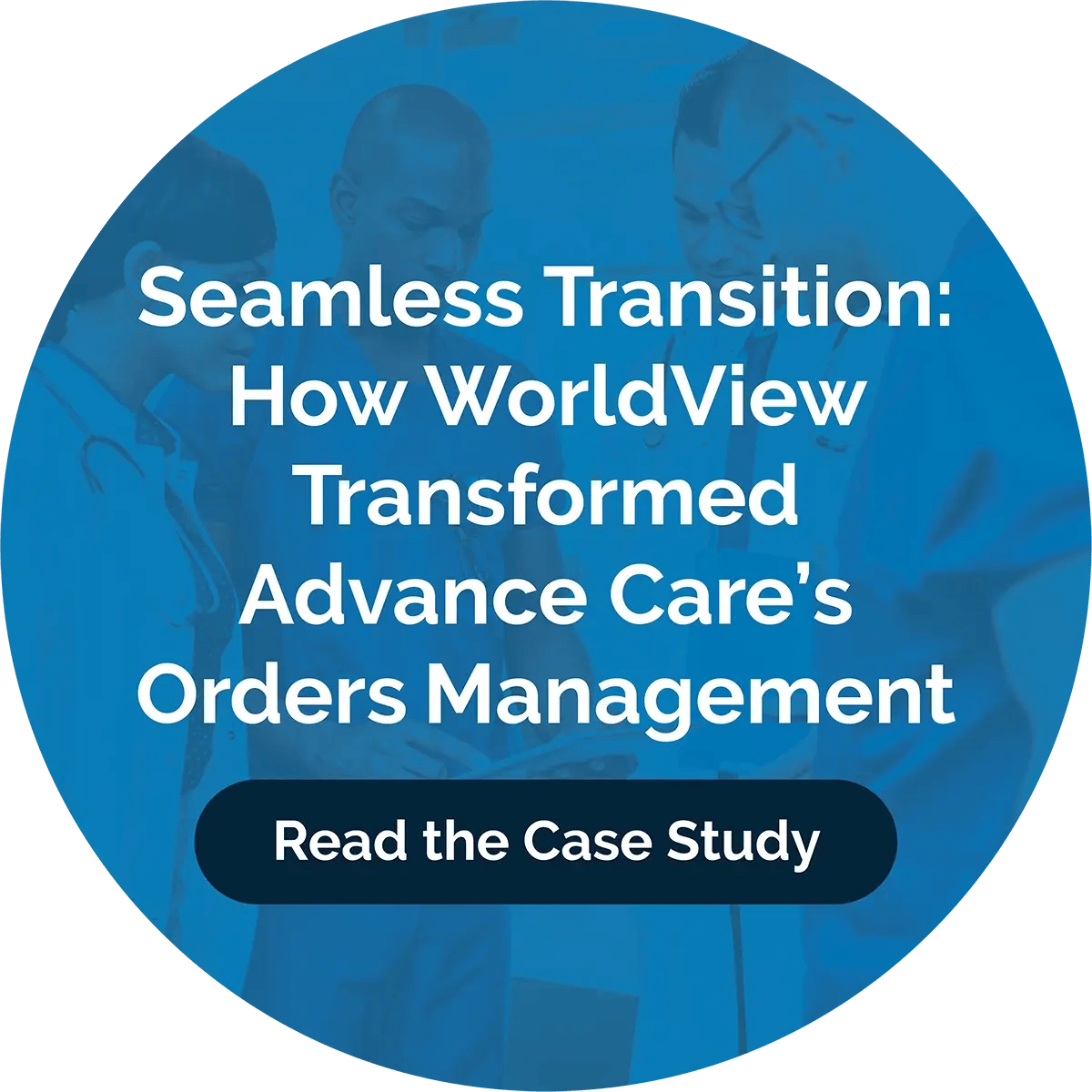Your Guide to Hospice GIP Documentation

According to reports, about one-third of hospice GIP claims are submitted inappropriately or in error. Many issues related to problems with hospice GIP documentation, where records didn't align with the treatment plan. Here's what to know about hospice care and documentation.
General Inpatient (GIP) Care Hospice Definition
General inpatient (GIP) care is short-term care to manage pain or acute or chronic symptoms otherwise unmanageable in other settings. GIP care is a type of hospice care available to any patient who meets these criteria. It is not based on specific symptoms, diseases, or conditions.
However, GIP care can only be provided in specific Medicare-certified settings, including:
● Hospital
● Skilled nursing facility (SNF)
● Hospice inpatient facility or unit
Levels of Hospice Care
There are four levels of hospice care: routine, continuous home, GIP, and respite. Each of these have different criteria.
Routine
Routine hospice care is the most common form of hospice treatment. The patient receives regular treatment and monitoring, but health is stable, and symptoms are well controlled. Routine care often happens in the home, but patients sometimes move from GIP care to routine care while still in the hospital or other facility. In this situation, the level of care changes but not the location.
Continuous Home Care
Continuous home care is an acute or crisis level of care often provided in the home. Patients in continuous home care have out-of-control pain or other symptoms that need a higher level of care. The care helps address acute symptoms while aiming to keep the patient at home. The hospice provider must provide 8 hours of nursing, homemaker services, or hospice aide care over 24 hours. These can be all at once or split up during the day. However, the services must be mostly nursing care delivered by an RN or LPN, with homemaker or hospice aide services as a supplement.
GIP
General inpatient care is similar to continuous home care, except the patient receives care outside the home in a skilled nursing facility or hospital. GIP care begins when teams can no longer manage health at home and need more advanced care to get symptoms and pain under control.
Medicare-Certified Hospital vs. Hospice Inpatient Facility
Choosing a hospital or hospice inpatient facility may depend on the insurance provider and your capabilities. Medicare, for example, does not allow continuous home care in hospitals or hospice inpatient units. Admission to these facilities is only for GIP care. Regardless of where the GIP care happens, hospitals and facilities must have dedicated spaces for private family visits and provide 24-hour RN care. The facility must also be equipped to deliver care according to the patient's plan.
Eligibility for GIP Care
Determining whether patients are eligible for GIP care requires specific criteria for general inpatient hospice care, including documentation and assessments.
Criteria for GIP Admission
GIP admission is a specific form of care intended only for a short time to get symptoms under control.
To receive GIP care, patients must have the following:
● Certification of terminal illness with a life expectancy of six months or less
● Election for hospice care
● Medical necessity for a higher level of care, such as:
o Short-term care to manage pain or symptoms
o Short-term care for observation, medication adjustment, or stabilizing treatment
● Documentation that supports the decision
Patients who have a breakdown in caregiver support at home do not qualify for GIP admission. GIP care is also not instantly appropriate if a patient is actively dying. Moving to GIP care must be for a higher level of care to address issues that aren't manageable at home or in other settings.
Assessment Process for Determining the Need for GIP Care
Assessing the medical necessity of GIP care is a collaborative process between providers. Typically, once a hospice becomes aware of changing symptoms and an acute crisis, the physician meets with the hospice's interdisciplinary group (IDG) to evaluate the patient's case and medical records.
This meeting may occur when a patient experiences a gradual decline in health with sudden changes in condition or symptoms or when continuous home care doesn't meet the need.
Providers might consider events or factors such as:
● Pain or symptoms that don't improve with treatment changes
● Advanced open wounds that need close monitoring
● Uncontrolled respiratory distress
● Delirium with behavior problems
Documentation Requirements for GIP Care
Once the IDG and physician determine that a patient meets the general inpatient hospice care criteria, gathering and submitting documentation is the next step.
Hospice GIP documentation includes:
● Plan of care
● Clinical record
● Documentation of medical necessity
● Summary of current status
● Physician orders
● Medication profile
● Daily symptom and treatment updates
● Discharge summary
GIP hospice care requires justification. You must show that the patient's symptoms and health status have changed and that continuing treatment at this level is appropriate.
Why Proper Documentation in GIP Hospice Care Matters
Home health and hospice documentation is critical to patient care. It keeps all providers in the loop about changing health status and symptoms, expedites timely care, facilitates billing, and maintains compliance.
Identifies Symptom Changes
Patient health can change rapidly during hospice care, and these changes may necessitate an escalation to another level of hospice care, such as GIP care. With proper documentation and updates to the clinical patient records, providers can quickly see changes in symptoms, such as increased pain, and mobilize treatment.
Facilitates Timely Care
Similarly, proper documentation provides critical information that influences timely and appropriate care. Whether through electronic documents or the EHR, documentation facilitates the continuity of care and coordination of services, eliminating gaps in care delivery or inadequate treatment. These connections are essential for high-acuity hospice patients who need close monitoring and daily updates.
Compliance and Billing
Documentation is the foundation of compliance with regulations and billing guidelines. Hospice workers and home health providers can avoid legal consequences by documenting each visit, observations of patient health, medications administered, and other care delivered.
In addition, it provides essential details for billing. Without those records, Medicare or other insurers may deny coverage.
Collaborative Efforts in GIP Care
Collaboration is critical in GIP care. The interdisciplinary providers and the hospice physician must work together to assess patients and determine whether a change in the level of care is necessary.
In addition, nursing and aide staff must document real-time symptoms and changes in health status in the field, especially ones that families can't manage. Collaborating facilitates timely and appropriate care to enhance patient comfort and dignity.
Modern medical records storage solutions like WorldView keep teams connected while leveraging next-gen tools like automation for more efficient communication and updates. Work smarter with WorldView and gain control of your records so you have more time for your patients.
Blog Post Tags
BusinessGet Awesome Content Delivered Straight to Your Inbox!
Posts by topic
- Healthcare
- Business
- AI
- Hospice
- AP Workflows
- Home Care Management
- hospice-care
- General
- Industry Insights
- agency
- Blog
- Commercial
- reporting
- Data Analytics
- billing
- referrals
- News
- Referral AI
- business goals
- Operations
- business development
- partners
- Integration
- Healthcare Trends
- leadership
- Medicare
- Compliance
- audit
- medicaid
- Better Charting
- regulations
- Application
- Automation
- finance
- CRM
- DMSi
- Events
- KanTime
- Press Release
- Revenue Growth
- Announcements
- Artificial Intelligence
- EHR
- ESign
- Guides
- Homecare Homebase
- Mobile
- Physician Order Tracking
- axxess
- clinical
- interoperability
- payor See All See Less


.png?width=596&name=WV%20Hc%20Clinical%201%20Web%20(3).png)
.png?width=596&name=WV%20Hc%20Clinical%201%20Web%20(2).png)
.png?width=596&name=WV%20Hc%20Clinical%201%20Web%20(5).png)